What is your idea of riyaaz (practice, in Urdu)?
Riyaaz is a very profound word. Our forefathers and ancestors have taught us that riyaaz is to look within oneself. One way of learning is to learn straightaway from the Guru; another way is through riyaaz. Riyaaz is the process of analysing oneself, assessing oneself, identifying one’s shortcomings, and improving upon them. In the process of riyaaz, you become your own teacher. Practicing the same thing, over and over again and improving upon it constantly and consistently is what is called riyaaz.
You know, during the time of my father (Acchan Maharaj) and uncles (Shambhu Maharaj and Lachhu Maharaj), riyaaz was a part and parcel of their everyday living. Just the way eating, praying and sleeping were inevitable aspects of their day-to-day living, so was riyaaz. They were so determined about their riyaaz, that without completing it they would not even eat their food.
Riyaaz helps your entire body, every single part of your body to immerse in rhythm. If your riyaaz is not solid, then some part of your body will be left out, and will not move in time when you want it to. You see, when you have to perform any action, the brain needs to order the movement, so riyaaz helps that process become more accurate.
In Kathak, specifically, footwork is considered to be the wheels or the foundation of the vehicle of dance. Only through consistent and sincere riyaaz, can one make this foundation stronger. If the foundation is shaky, your body will not move the way you would like it to, with the accuracy and efficiency you want it to... However, with a solid practice, you can dance with a carefree spirit, without thinking too much, and your body will move just the way you want it to; it will be in your control.
Does riyaaz have an ultimate destination?
Riyaaz is an ongoing journey. It never ends, because we can never attain complete perfection in any matter. Perfection is a very big word, a very grand task. Nobody in this world is perfect in any aspect. The purpose of riyaaz is simply to go one step further above from where you are right now. It is plainly to improve your work and yourself. That is all...
The content and presentation has changed a lot over the years. What is the point of presenting something that people cannot appreciate! It is like murgi jaan se gayi, aur khaane waale ko maza bhi nahi aaya (the chicken lost its life, and the person eating it did not even enjoy it)
Back in the day, riyaaz was treated like fasting, that had to be done with patience, perseverance and sincerity. Artistes who undertook riyaaz were not disturbed and were taken good care of so that they could fulfil their undertaking. In today’s world, how has the approach to riyaaz changed?
Nowadays, I feel we are all too involved in activity, and it is not futile... These are things we have to do to keep the organisation together, and tasks that we have to fulfil in our personal lives. A decade ago, I remember parents and families advising their children to focus on studies, on improving themselves, and on pursuing their passions, forgetting the rest of the world. These days, that is not easily possible.
In the last twenty five-thirty years, India has started moving faster, everything is faster and result-oriented now. Besides, in the current era, everything has become much easier; the scope is better, and opportunities to perform, teach and present across the world are many more. So when there are short-lived goals and easily attainable goals, people don’t approach things with a certain seriousness that they are meant to be approached with. People don’t put in the same effort and are not so committed. However, children and youngsters of the current generation are very intelligent. They know what they will get out of doing something, and they act according to what they want to get out of it.
I have taught and mentored students from across the world, and I have observed that Kolkata is one place where riyaaz is still done the way it should be done. Their understanding of the concept of riyaaz, and their love and passion for it is evident. A certain level of riyaaz is expected from the students there and they execute it very well, and one of the reasons is that the students do not get as many random opportunities to perform there, as there may have in other places. It is not that they don’t have other commitments or have the luxury of more time, but simply that they are more serious about it. In Kolkata, they practice only for the sake of practice, for their own love of doing it. They don’t practice for performances, for achievements, for goals, for fame, for anything else. It like singing or dancing for yourself... Nobody is listening to you, you don’t have anything to prove, and you are doing it only because you are enjoying it, and in the process, you are improving your own art.

In this changing landscape of riyaaz, is it possible for the dance form to sustain its original essence?
It is sustaining in a way. You see, we ourselves have evolved the form a lot in the last three decades or so. Things have changed a lot in the past years; people’s understanding levels have changed a lot. Earlier, in dance conferences, there were connoisseurs, who were well-versed with the subject, and could understand the subtle nuances and rhythmic patterns of the dance. These days, we perform for a common audience, and there are many different kinds of audiences. Now many of these audiences do not understand the technicalities of the art form. So our attempt is usually to share the joy of the dance with them, the joy that we are experiencing. We create items such that anybody can relate to them. We see in student communities, they enjoy chakkars (spins) and rhythmic aspects, and all that speed and splendour of the dance, and in other cases, the audience enjoys and understands the abhinaya (expression) and storytelling aspect of the dance, so we customise it accordingly. Of course, in conferences, when we know that connoisseurs are going to be the audience, then we present something that is challenging for us as well as for them. The content and presentation has changed a lot over the years. What is the point of presenting something that people cannot appreciate! It is like murgi jaan se gayi, aur khaane waale ko maza bhi nahi aaya (the chicken lost its life, and the person eating it did not even enjoy it).
Dance is so vast and deep, and we can choose the aspects that we want to present, and the way we want to present them. But you cannot do that if you have not done ample riyaaz. Simply learning and performing does not make any difference. You have to practice and understand the art form deeply. If you are well-versed in a language, you can communicate with a child, a common man as well as an intellectual. You will know how to simplify it and how and where to use literature, so people can appreciate that vocabulary. So that mastery comes only with riyaaz.
If a performer has depth, involvement, clarity and confidence, we are attracted to it, and it stays with us somewhere inside. Even after time passes by, we remember that performance and the depth of the performer, and how we were moved by it. So that depth comes only with involvement
Would you recommend that a student, who is perhaps a non-performer, also practice as intensely as a performer? How do you suggest the level and kind of riyaaz for a specific student?
Each student, at every step, must undertake a different level and kind of riyaaz. But there are a few things that are common for all of them. I give my students a simple example. If you need to thread a needle, you need to concentrate and have a basic idea of how to do it. You cannot look here and there, laugh at someone, or speak to someone, and thread a needle. Even to do such a simple thing, we need to concentrate.
While learning anything, you may want to go up to only to a certain level, but go until there with full involvement. You may not become a performer, but you may become a teacher, you may become a connoisseur of the dance, you may become a good critic, and you can speak about it intelligently. When you go abroad and people ask you about the classical dance forms of India, you should be able to speak about it if you have learnt it. If you learn it on a superficial level, you will not be able to speak about it at all. So practice that much, so that it goes into you deeply.
Sometimes, we watch a performance and we even applaud the artiste for the chakkars or the footwork, and then after two days, we watch another performance and we forget about this one. On the other hand, if a performer has depth, involvement, clarity and confidence, we are attracted to it, and it stays with us somewhere inside. Even after time passes by, we remember that performance and the depth of the performer, and how we were moved by it. So that depth comes only with involvement.
When good singers perform, they tune their tanpura for two hours before the performance in solitude, because they want the vibrations of the tanpura to go inside them. For dancers, the body is the instrument we use. We tell our students to practice at least for a few minutes every day, but to practice every single day. We have to tune the mind, the body, the emotions, everything. Riyaaz helps synchronise and integrate all parts of your being, and when you perform, it shows. Through consistent practice, your dance can become a well-oiled machine. And if there is a lag in it, eventually there will be an oiling problem.
After so many years of teaching, our eyes are able to make out the effort that a student has put in very easily. Some of them are very involved, and we often tell the others that she also has studies or other commitments like you, but this student has at least thought about dance for a few minutes, and prepared herself just enough to be able to show it to us the next day. So even this makes a big difference... For the first five, six, or seven years, we have to inculcate the art of riyaaz in the student, but after that, once they get the swaad (taste) of the dance, they do it on their own.

How would you define the concept of quality in riyaaz?
We must remember that physical labour alone is not riyaaz. When I see a performance and I like something that I saw, and I come back and contemplate on it... When I pick a composition and think about the lyrics deeply... All this internal churning is also riyaaz. Sitting in one place and using your mind and imagination is also riyaaz.
You have to really nurture your art and fill it with colour. You have to add life and greenery to your dance, and that is possible only when you practice with your mind, with your heart. When you practice your movements, you are doing labour, but dance is supposed to be beautiful. We cannot afford to get stuck in labour. You can compare physical movements to a stone, and as you progress in your riyaaz, the same stone becomes a ball. Something that was so heavy and dry in the beginning is transformed into something so light and useful. When you practice with your mind and heart, it impacts your whole body, and you will realise the fruits of that. This is a law.
How does one become better at riyaaz, considering all the internal and external distractions that we as human beings are subject to?
Speaking of my own journey in riyaaz, in the beginning, I used to practice for six hours at a stretch. Later, there was phase when, for maybe three years or so, I used to practice for at least four hours continuously, every single day, without any excuses. I practiced even when I was sick. My mother used to try to coax me to eat in between, or just take a break, but I was very stubborn about my practice. I refused to take any breaks in-between. Sometimes, you just have to promise yourself that you will go on, at any cost. Situations maybe challenging, storms and obstacles may come our way, but if we don’t lose courage, and attempt to practice anyway, amidst all the chaos, we will find ourselves empowered. So, I practiced this way for three years, with my mind, my body and my intellect.
So the answer to the question is patience. It has to be done with utmost patience and diligence. In the Ramayana, God says, “Remember me for five minutes with all your heart and mind, that is enough.” He does not say five hours, and he says with all your heart and mind. So you see, that is the most significant factor, not to do it for hours, but to do it with your mind and heart.
Nowadays, when people practice, four musicians are sitting in front of them, and everybody’s eyes are moving here and there, trying to catch what the other person is watching. All these things are distractions. Riyaaz should be done with the same concentration and devotion as prayer. There should be integrity in your riyaaz. If you have the blessings of God and your Guru, this will come more easily.
When I was younger, I used to shut all the lights, close all the windows and practice in darkness. I used to practice in darkness because I did not want to see myself. I only wanted to hear my ghungroos and feel myself
Riyaaz requires one to spend a lot of time in solitude. Is riyaaz similar to meditation in the sense that it leads to a deeper understanding of our art as well as ourselves?
Oh yes! When I was younger, I used to shut all the lights, close all the windows and practice in darkness. I used to practice in darkness because I did not want to see myself. I only wanted to hear my ghungroos and feel myself. In darkness, your attention becomes one-pointed; there are no distractions. Darkness is a place where you can just stay; you don’t have anywhere else to go...
For instance, this very moment I am speaking to you, but I am connected to the inner rhythm within me. I am never apart from that rhythm, and anybody can do that with attention. Whether you are lying down, sleeping, eating, bathing, walking, or doing anything else, you will never be apart from that rhythm. You and that rhythm will become one.
You must learn to love yourself, your art. You must become your own friend, and you must make the art your friend. Now, I am not talking about worldly friendship. I am speaking about a true companion, whose only job is to give you joy and bliss, who will walk with you throughout your life, and will leave you only when you leave the world. Friends of this world can cheat you, anybody in this world can cheat you, but this friend is most trustworthy and reliable. So, love yourself and love your dance. I sometimes look at my hands and admire them. I look at my legs and adore them. I thank them for supporting me, for helping me, for serving me. I tell them, “My dear hands, my dear feet, you’ll are my companions, my friends.” So become friends with yourself, then you will be in a state of bliss all the time.
After so many years of riyaaz, would you think that you have achieved your idea of perfection in dance?
Sometimes, I feel I have reached somewhere, and then I realise that there is this new thing that I know nothing about. When you are contemplating and churning on something inside, new things always come up. Once it comes up, I accept it first, and then I appreciate it a lot. I say to it, “Oh wow! You are wonderful, so beautiful!” Then I try to understand it, and once I understand it, I then teach my students. This process goes on. When the mind and heart are constantly thinking of something, new insights are always born.
The Qs would like to thank Saswati Sen, prime disciple of Pandit Birju Maharaj for her support towards the realisation of this interview
Interviewed by Payal H Chhabria
1 comments Comments




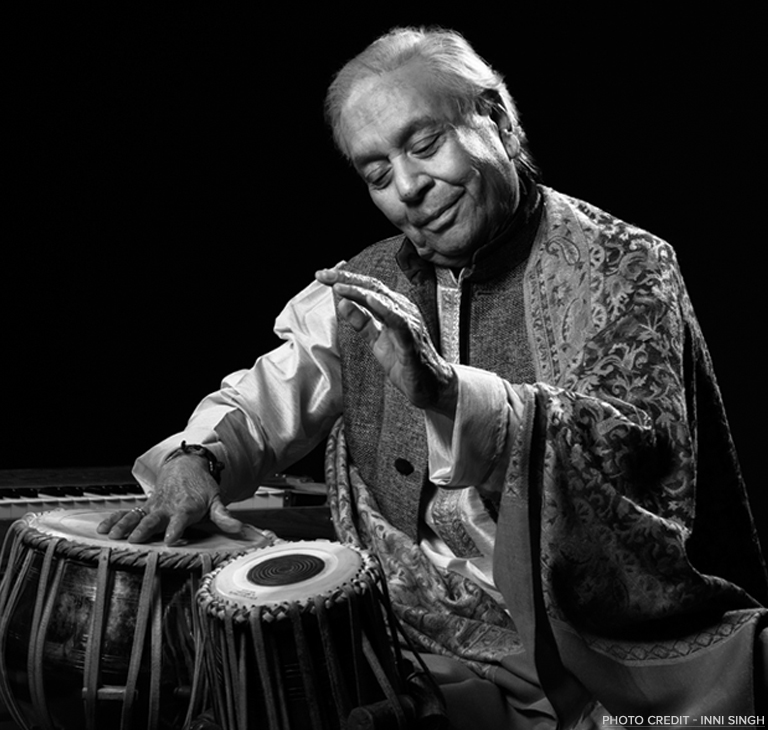





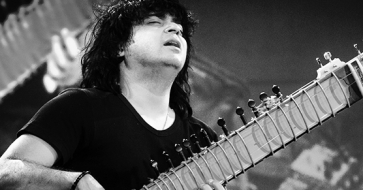
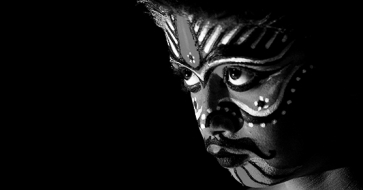
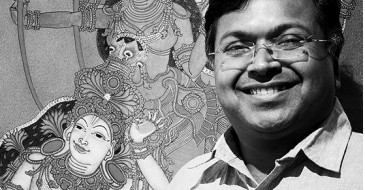
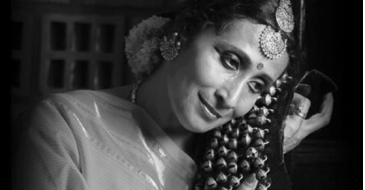
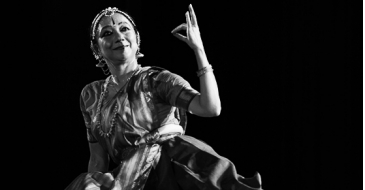
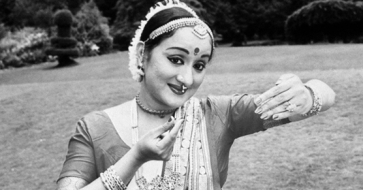
Dr.Kalarani
July 11, 2017